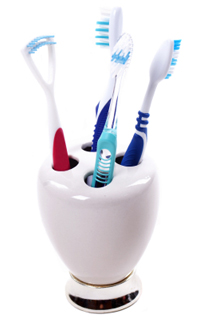By Abra Pappa for NutritiousAmerica.com
There is a science behind food cravings, and I don’t use the word “science” lightly. It is an honest to goodness, white-lab-coat-Bunsen burner-protective-goggles science. Food “scientists” know exactly what it takes to create a food that is “crave-able.” They research and experiment and come up with specific addictive qualities or additives that food must contain in order to rank as a food that you will keep reaching for.
Salt, sugar, and fat, or chemical products that taste buds recognize as salt, sugar or fat, are key flavors that enhance a foods crave-ability.
When you eat, food residue or food particles can be left behind on your tongue. When those particles mix together with the bacteria in your mouth a coating or film is created. This coating “feeds” our craving mechanism. For instance, if you eat a fast food hamburger on a Monday, on Tuesday you may find yourself thinking about that burger again. This is not a sign of poor “willpower” or an “inability” to eat healthy food, rather it can literally be your tongue coating that is sending a signal to your brain that you want more of the food that has been left behind.
This is one of the key reasons fast food restaurants advertise to children. They know when a child “develops a taste” for their food at a young age they become life long customers.
Furthermore, when your diet is full of processed “food-like” products that are loaded with extra fat, sugar, and salt your taste buds suffer and become desensitized. Desensitized taste buds are greedy little buggers, requiring more and more food for you to feel satisfied, as satiety is signaled by flavor.
Enter the tongue scraper.
A tongue scraper is a U-shaped tool typically made of stainless steel or mother of pearl (and plastic, but I don’t recommend the plastic variety). It has been used traditionally in many cultures for centuries. In the Ayurvedic philosophy of India, tongue scraping has been recommended as a supportive tool for digestive health and health of the teeth and sinuses.
As you scrape the coating of bacteria and old food particles off of your tongue you are literally “cleaning your palate.” Your taste buds become more sensitive so you can appreciate the subtle flavors of food, without added salt, sugar, or fat. As the tongue becomes free of old food particles cravings for unhealthy foods may be reduced. Tongue scraping also helps clear the area around the salivary glands which aids in digestion. Digestion begins in your mouth as saliva mixes with food to begin to break it down.
You can find tongue scrapers at most drugstores or natural food markets. To use, after brushing and flossing your teeth, gently place the tongue scraper as far back on your tongue as you comfortably can (if you gag, you have gone too far), scrape forward several times. You do not need to apply pressure, this is a gentle process. Rinse the tongue scraper with hot water when you are finished.
If you’re thinking, “well, I already brush my tongue,” I’m here to say it’s not quite good enough. Brushing the tongue can move things around and sometimes embed the food particles deeper into the tongue, where tongue scraping efficiently moves the bacteria out.
Do this morning and night, if you have an excessive white film that is coating your tongue be sure to make this a daily habit. Take note of your cravings after using a tongue scraper. A client, Kathy, reported dramatic improvement in cravings after a few days. As an added bonus you will also have much sweeter breath.
Happy Tongue Scraping!
